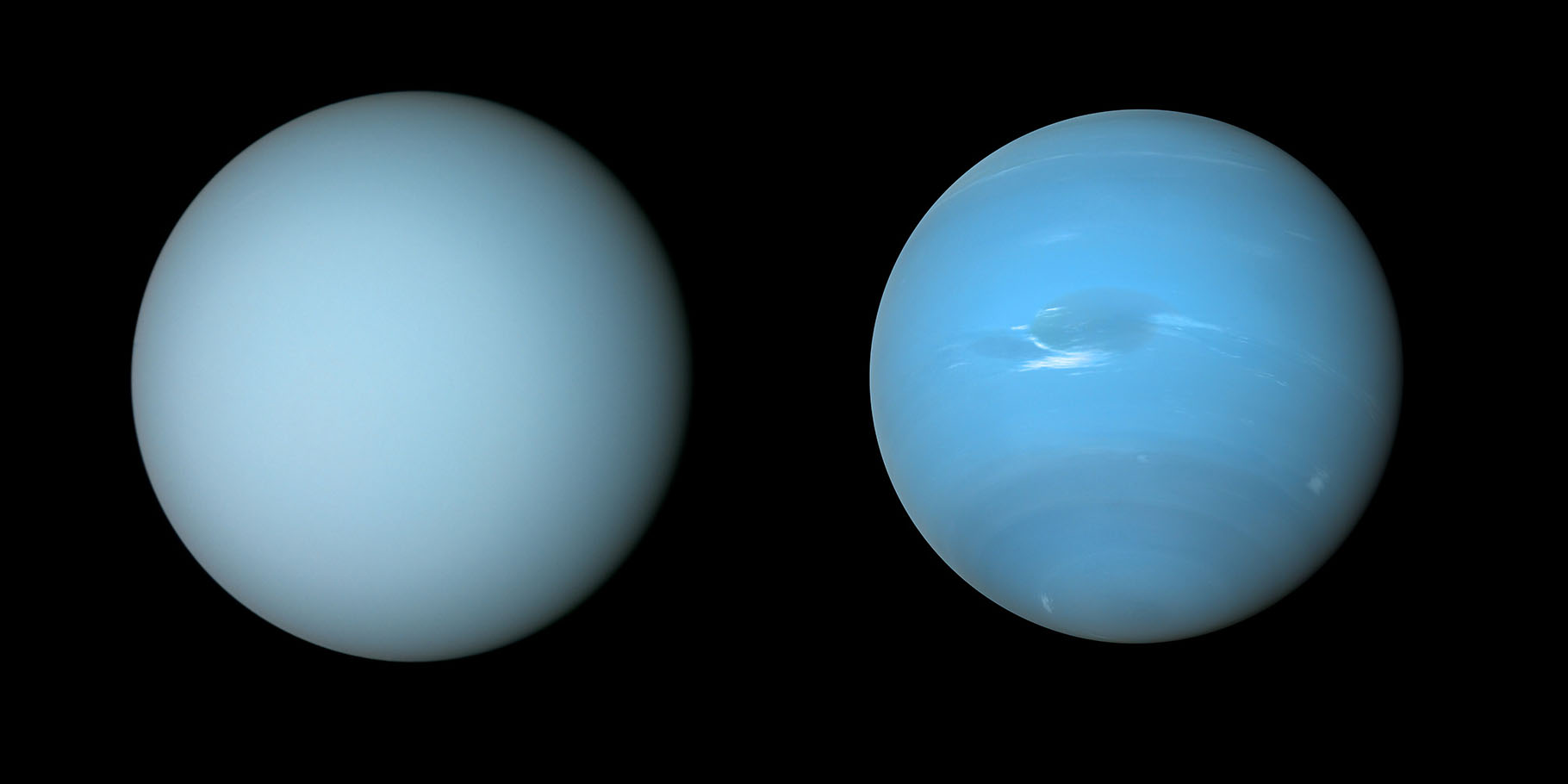NOIRLab: Gemini North Telescope Helps Explain Why Uranus and Neptune Are Different Colors

Astronomers may now understand why the similar planets Uranus and Neptune are different colors. Using observations from the Gemini North telescope, the NASA Infrared Telescope Facility, and the Hubble Space Telescope, researchers have developed a single atmospheric model that matches observations of both planets. The model reveals that excess haze on Uranus builds up in the planet’s stagnant, sluggish atmosphere and makes it appear a lighter tone than Neptune.
Neptune and Uranus have much in common — they have similar masses, sizes, and atmospheric compositions — yet their appearances are notably different. At visible wavelengths Neptune has a distinctly bluer color whereas Uranus is a pale shade of cyan. Astronomers now have an explanation for why the two planets are different colors.
New research suggests that a layer of concentrated haze that exists on both planets is thicker on Uranus than a similar layer on Neptune and ‘whitens’ Uranus’s appearance more than Neptune’s [1]. If there were no haze in the atmospheres of Neptune and Uranus, both would appear almost equally blue [2].
This conclusion comes from a model [3] that an international team led by Patrick Irwin, Professor of Planetary Physics at Oxford University, developed to describe aerosol layers in the atmospheres of Neptune and Uranus [4]. Previous investigations of these planets’ upper atmospheres had focused on the appearance of the atmosphere at only specific wavelengths. However, this new model, consisting of multiple atmospheric layers, matches observations from both planets across a wide range of wavelengths. The new model also includes haze particles within deeper layers that had previously been thought to contain only clouds of methane and hydrogen sulfide ices.
“This is the first model to simultaneously fit observations of reflected sunlight from ultraviolet to near-infrared wavelengths,” explained Irwin, who is the lead author of a paper presenting this result in the Journal of Geophysical Research: Planets. “It’s also the first to explain the difference in visible color between Uranus and Neptune.”
The team’s model consists of three layers of aerosols at different heights [5]. The key layer that affects the colors is the middle layer, which is a layer of haze particles (referred to in the paper as the Aerosol-2 layer) that is thicker on Uranus than on Neptune. The team suspects that, on both planets, methane ice condenses onto the particles in this layer, pulling the particles deeper into the atmosphere in a shower of methane snow. Because Neptune has a more active, turbulent atmosphere than Uranus does, the team believes Neptune’s atmosphere is more efficient at churning up methane particles into the haze layer and producing this snow. This removes more of the haze and keeps Neptune’s haze layer thinner than it is on Uranus, meaning the blue color of Neptune looks stronger.
